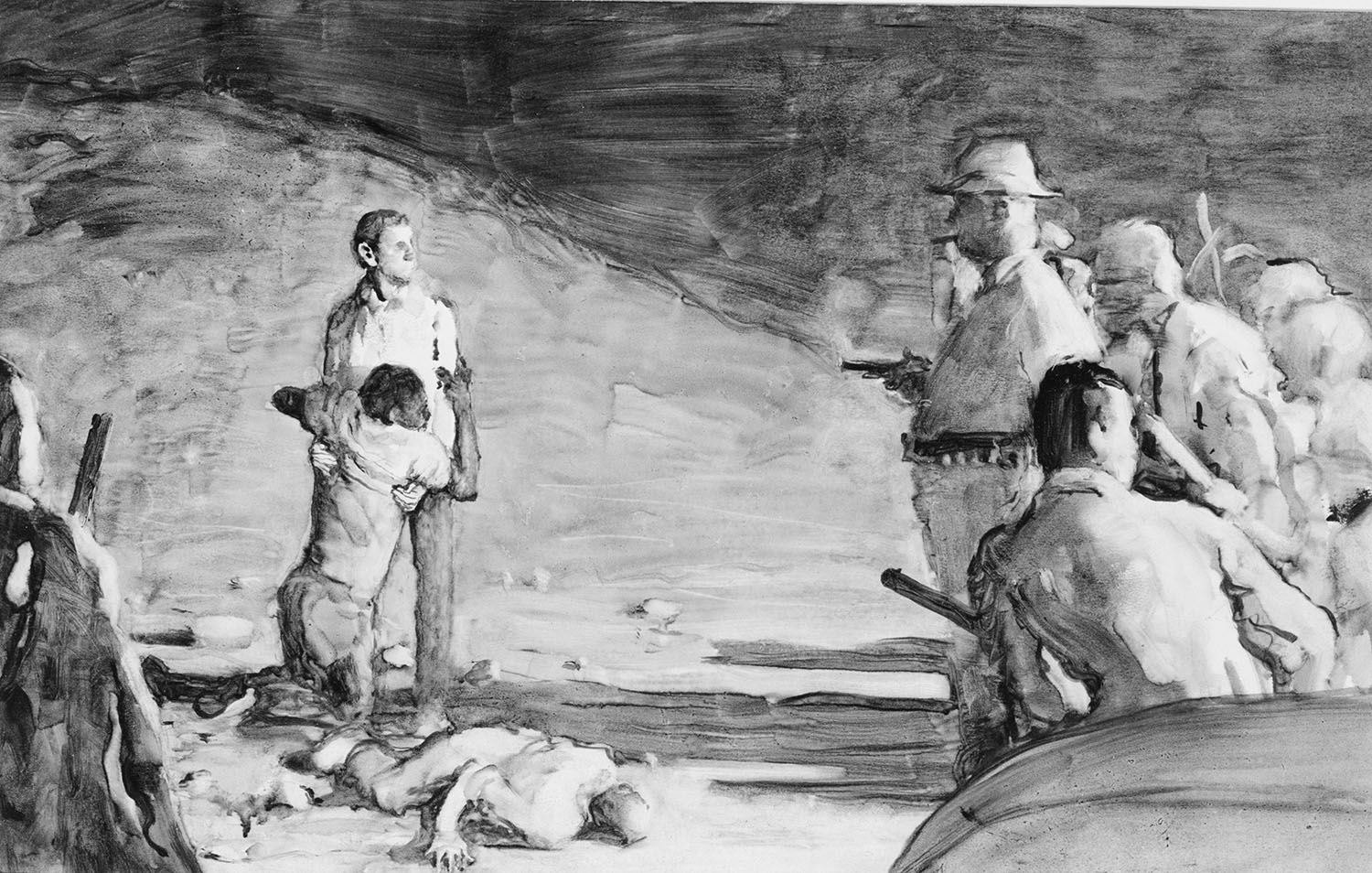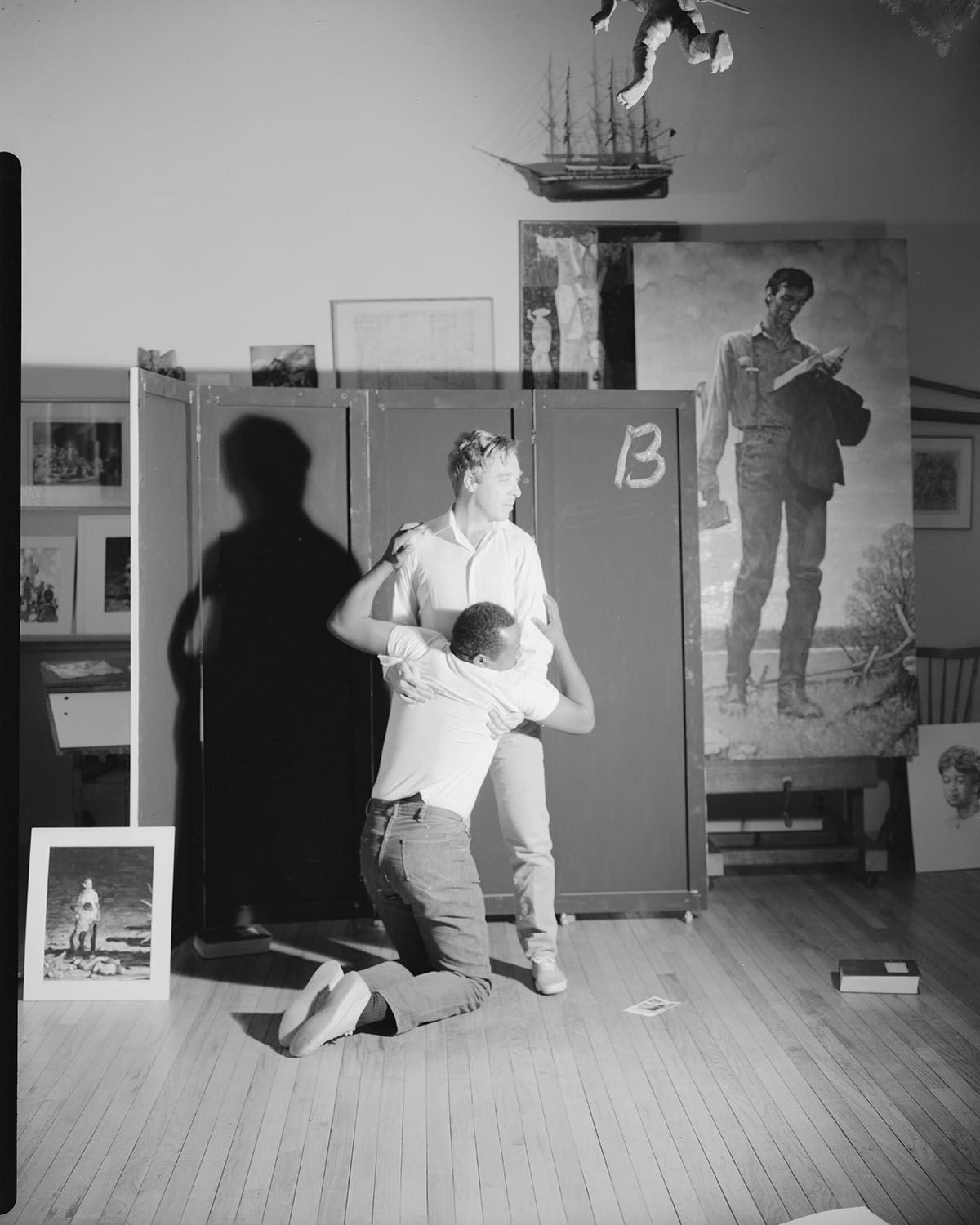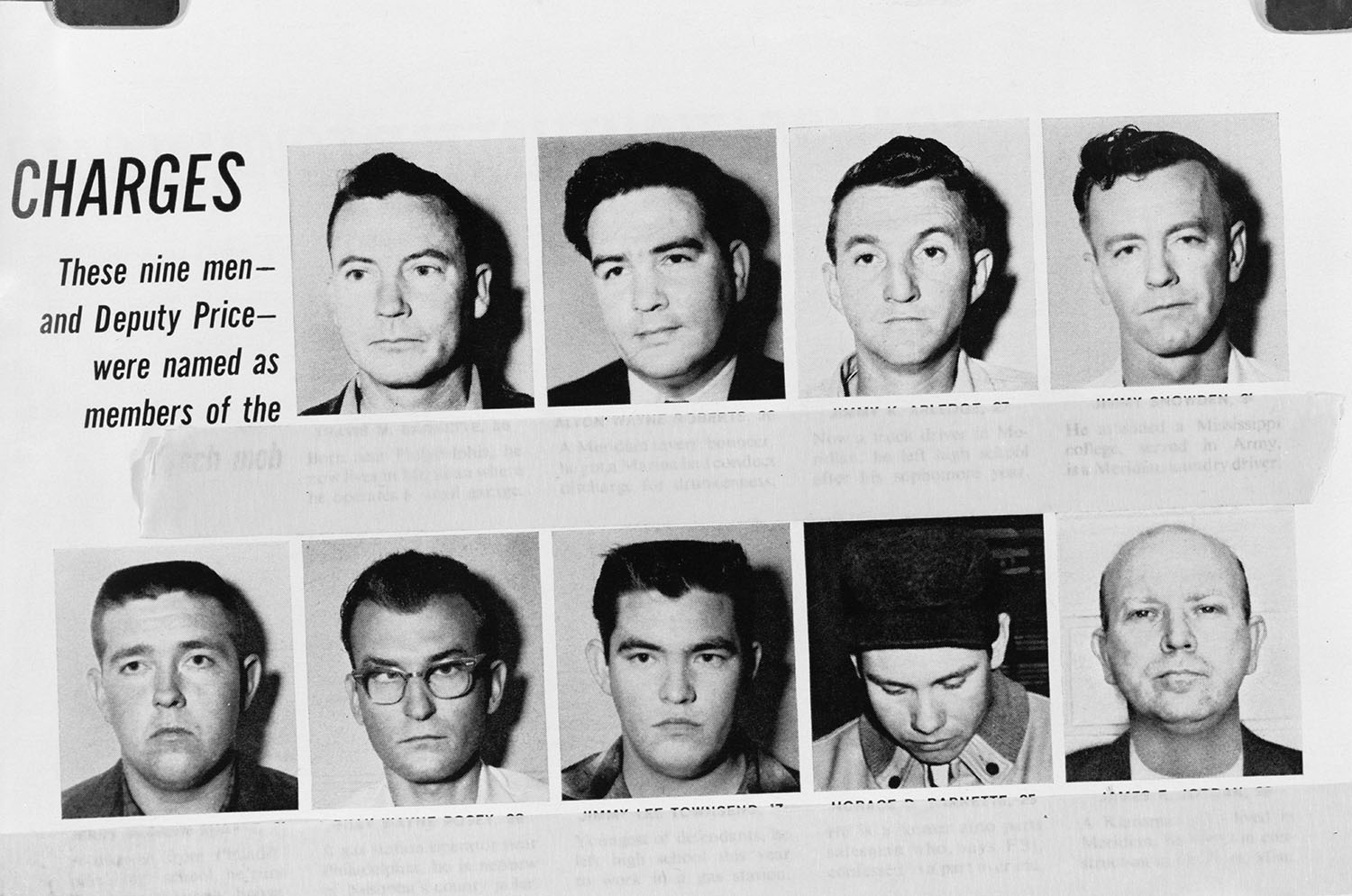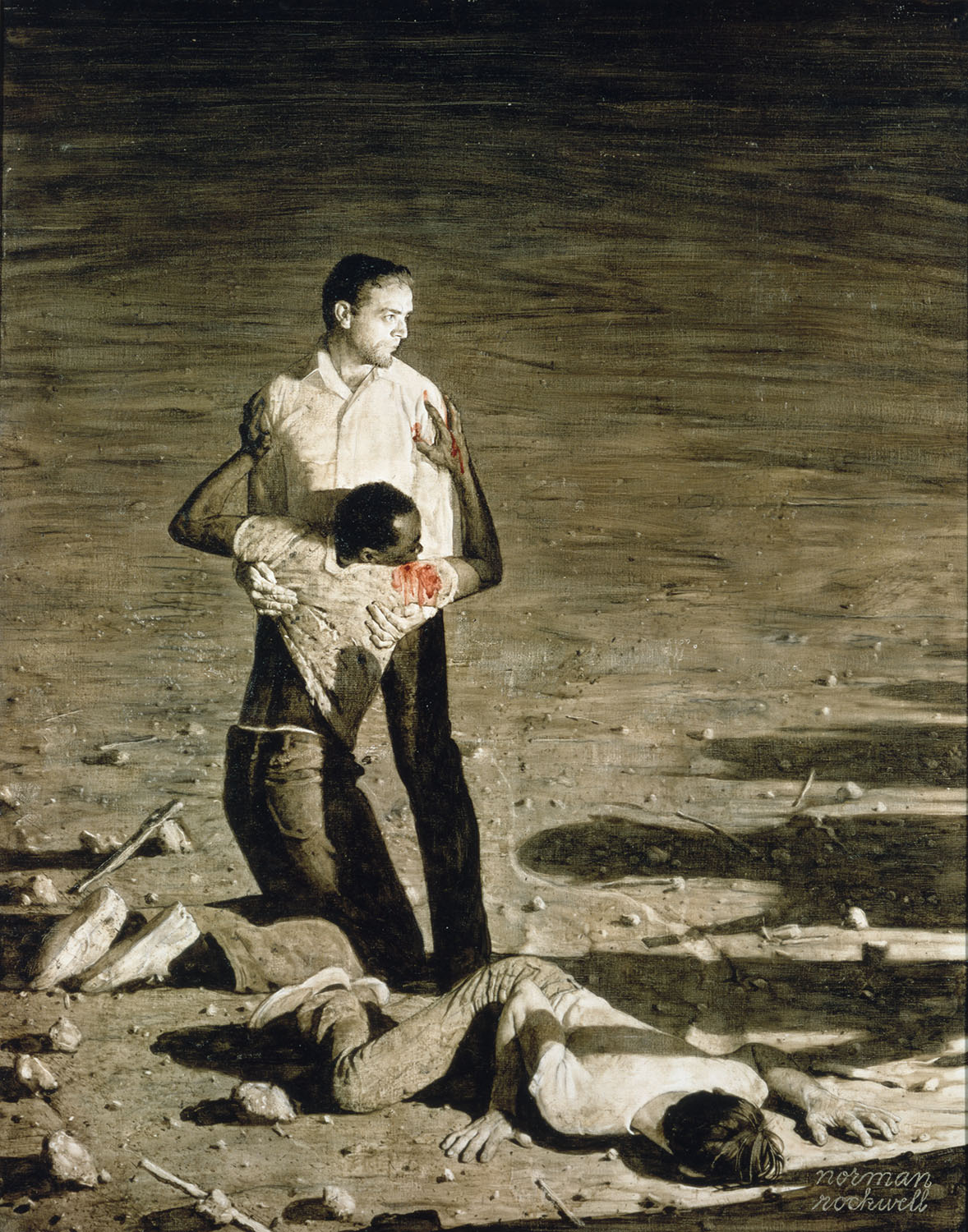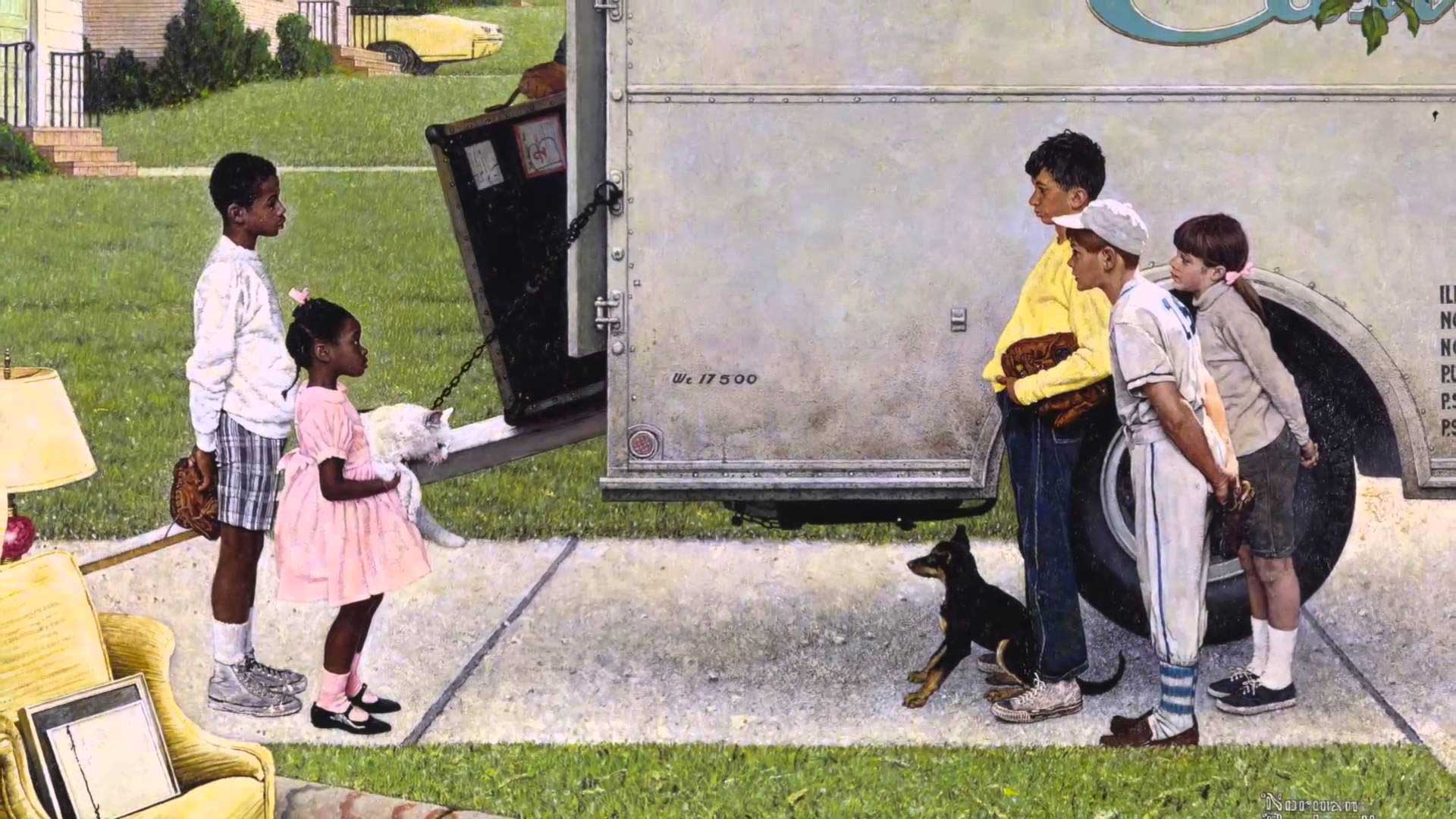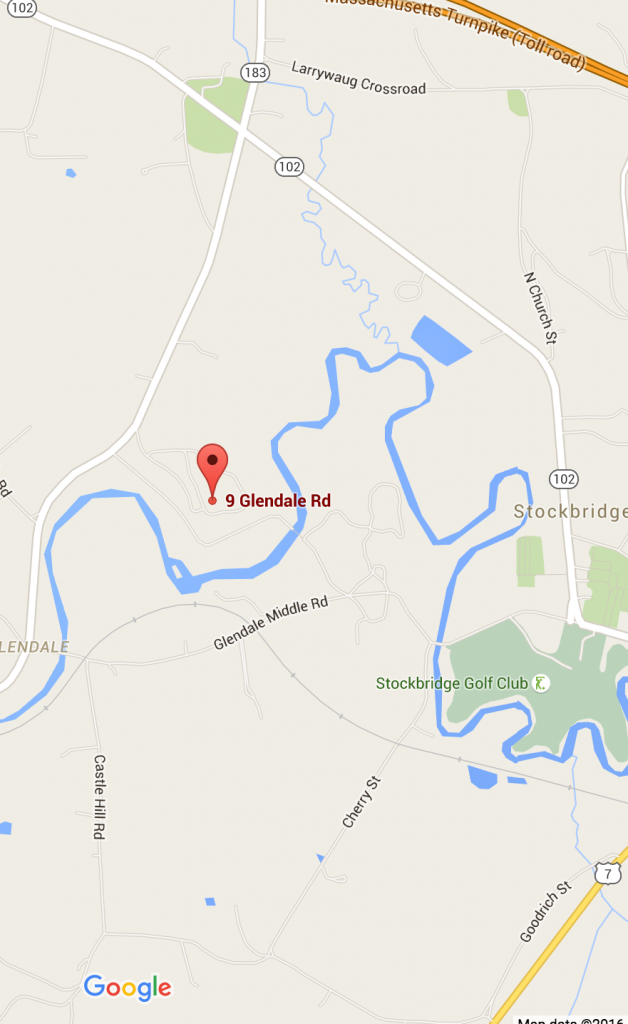Norman Rockwell: Murder in Mississippi
ABOUT THE EXHIBITION
On view through July 27, 2021
In 1964, after The Problem We All Live With ran in Look magazine, Norman Rockwell received many letters criticizing his choice of subject, but irate opinions did not stop him from pursuing his course. In the 1965 painting Murder in Mississippi, he illustrated the Philadelphia, Mississippi, slaying of civil rights workers Michael Schwerner, Andrew Goodman, and James Chaney.
The anatomy of this particular work illuminates Rockwell’s process. Veering from his habit of working on five or six projects at a time, Rockwell ignored other commissions. The result was an intensive five-week session in which he produced charcoal preliminaries, an oil color study, and the large final painting.
In an interview later in his life, Rockwell recalled earlier having been directed by The Saturday Evening Post to remove a black person from a group picture because the magazine’s policy dictated showing black people only in service industry jobs. Later, freed from such restraints, Rockwell seemed to look for opportunities to correct editorial prejudices inadvertently reflected in previous work. The Problem We All Live With and Murder in Mississippi ushered in that new era.
In the beginning of 1965, Rockwell began work on an illustration for Look about the June 21,1964, murders of three young civil rights workers in Philadelphia, Mississippi. Michael Schwerner and his chief aide, James Chaney, were in Philadelphia to assist with training summer volunteers, one of whom was Andrew Goodman. Schwerner had been targeted by the Klan for his organization of a black boycott of white-owned businesses and for his attempts to register blacks
in Meriden.
Hearing of a Klan attack against blacks and of arson at Mount Zion Church, the three men drove to the site. On their return to the Meridian office of Congress of Racial Equality (CORE), they were taken into custody by Deputy Sheriff Price, by some accounts for speeding and by others for supposedly setting the fire. After releasing them later that night, Price tailed them. Once outside of town, Klansmen intercepted them and hustled them into Price’s car. They were driven to a remote location and shot point blank. Their bodies were then taken to the farm of one of the Klansmen, dumped into a dam site, and covered by tons of dirt pushed over them by tractor.
Rockwell conceived Murder in Mississippi as a horizontal composition to run across two pages. The young men would be pictured on the left page and Philadelphia Deputy Price and the posse of Klansmen wielding sticks (we later learned all were armed with rifles and shotguns) on the right. His next idea was to do two separate vertical pictures— the first showing the civil rights workers and the second showing the Mount Zion Church. Rockwell hired local architect Tom Arienti to draft a church steeple, but later decided against including the church.
On July 16, 1964, The New York Times ran a story titled “A 2nd Body Is Found in the Mississippi.” A saved copy of the story, found among Rockwell’s reference materials, establishes that he had the June 21, 1964, murders in mind long before beginning work on his painting in March 1965.
As no one had yet reported the exact details of the murder when Rockwell began his painting, he borrowed from Hector Rondon’s 1963 Pulitzer Prize–winning news photo “Aid from the Padre” for the pose of Michael Schwerner holding James Chaney. Rockwell later wrote a note to himself to remember to tell Look art director Allen Hurlburt he had used Rondon’s photo.
Before he began work on his painting, Rockwell compiled notes on the physical traits and clothing of the three young men, the circumstances of their abduction, and the brutal details of their murders. Additional details about the day and the place the three men were murdered were recorded.
Abbreviated versions of Rockwell’s handwritten notes were typed. The parenthetical remark, “I have not tried to make absolute likenesses,” and the use of stationery indicates they were probably intended for Look art director Allen Hurlburt.
Found among his references, this news clip reveals that Rockwell originally considered showing the Klansmen as individuals. Just as he had compiled notes about the victims, police photos provided him with information about the Klansmen’s physical traits.
Rockwell’s son Jarvis served as one of his models. Rockwell’s studio, ordinarily bathed in north light, was darkened with shades. Spotlights were brought in to create a nighttime effect. Additional photos were taken of Jarvis Rockwell and Oliver McCary with McCary appearing more wounded.
Blood—human blood, at Rockwell’s insistence—was procured from a concealed source and applied to a shirt that represented the shirt Michael Schwerner was wearing when he was killed. Rockwell himself wore the shirt for the posing, probably not wanting to ask anyone else to wear it.
On April 14, Rockwell sent his final painting to Look. On the 29th, Rockwell received word that Look had decided to use his color study rather than the final painting. Three years later, Rockwell reflected that by the time he had finished the final painting, “all the anger that was in the sketch had gone out of it.”
ABOUT THE ARTIST
Born in New York City in 1894, Norman Rockwell always wanted to be an artist. At age 14, Rockwell enrolled in art classes at The New York School of Art (formerly The Chase School of Art). Two years later, in 1910, he left high school to study art at The National Academy of Design. He soon transferred to The Art Students League, where he studied with Thomas Fogarty and George Bridgman. Fogarty’s instruction in illustration prepared Rockwell for his first commercial commissions. From Bridgman, Rockwell learned the technical skills on which he relied throughout his long career. Learn more…
MEDIA
VENUE(S)
Norman Rockwell Museum, Stockbridge, MA July 12, 2020 through May 31, 2021.
DIRECTIONS
Norman Rockwell Museum
9 Glendale Road Route 183
Stockbridge, MA 01262
413-931-2221
Download a Printable version of Driving Directions (acrobat PDF).
Important note: Many GPS and online maps do not accurately place Norman Rockwell Museum*. Please use the directions provided here and this map image for reference. Google Maps & Directions are correct! http://maps.google.com/
* Please help us inform the mapping service companies that incorrectly locate the Museum; let your GPS or online provider know and/or advise our Visitor Services office which source provided faulty directions.


